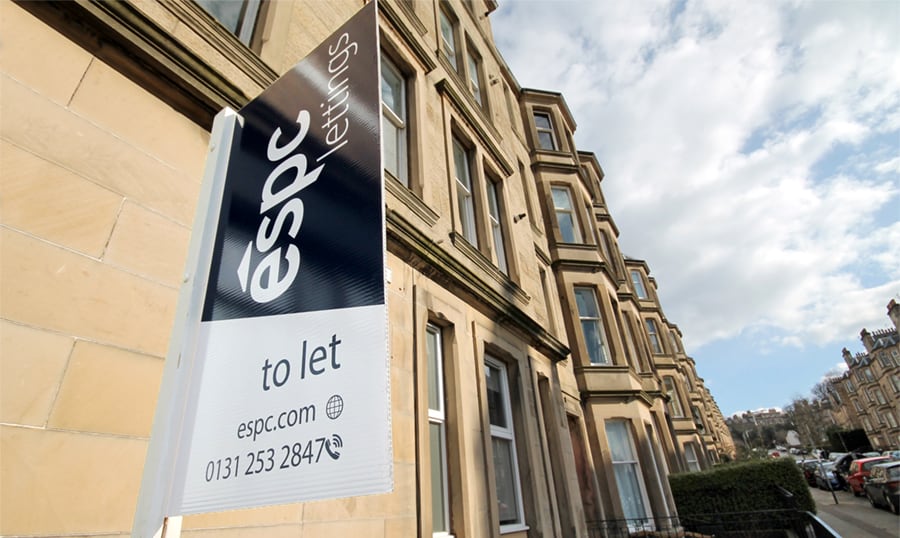If you’re considering becoming a landlord in Scotland, it’s fair to say you will likely have many questions about what’s involved, especially while legislation is so fresh, and the market has been through some intense challenges in recent years.
In this article, we’re answering some of the questions that landlords and prospective landlords most commonly ask, so that you can feel informed and prepared to embark on your buy-to-let journey.
Should I inform my mortgage lender?
If you’re already a homeowner, and you want to rent out a property you currently have a residential mortgage on, then you must inform your mortgage lender that you wish to rent out the property. This means that you may need to convert your mortgage to a specific buy-to-let mortgage.
If you are purchasing a property with the intent of letting it, you will need to apply for a specific buy-to-let mortgage, which differs from a regular residential mortgage. A good mortgage advisor will be able to guide you on this and tailor advice to your individual circumstances.
How much rent can I charge?
This is a tricky one, especially in the current climate. It’s been well-documented that there’s been a cap on rent increases since late 2022, which has severely limited the rental rates that landlords are permitted to charge. However, as of 1 April 2024, new legislation is coming into force which means that landlords will be able to charge the rent they feel is appropriate for their property – although you should be aware that tenants can challenge this and refer it to the rent office for adjudication, in which case a tapering system and a cap would be applied if the proposed rent was found to be above the open market rate.
Generally, rental rates vary depending on the current market, as well as the location, size, and condition of the property, but you should do your research and speak to a local letting agency to help you decide on the most appropriate rate to market your property at.
Does it cost me anything to rent out my property?
As a landlord, you should expect to have some initial financial obligations when you decide to rent out a property, such as costs associated with redecorating and furnishing a property, as well as updating appliances and ensuring that all safety requirements have been met. It’s a good idea to strike a balance between working to a sensible budget, and ensuring that you’re furnishing your property to a high enough standard that it will appeal to quality tenants and achieve a good rental rate. Landlord’s also have safety regulations to adhere to and must ensure they have the applicable checks and certificates (detailed in the last section of this article).
If you choose to use a property management service, there will also be ongoing costs associated with this, but amounts are variable depending on the level of service you need.
Do I need to pay council tax on my rental property?
Yes and no. When the property has a tenant in situ, the council tax becomes their responsibility, and you should ensure this is clearly outlined in their contract. If the property becomes vacant, it is then the landlord’s responsibility to pay council tax and other bills.
Should I use a letting agent for my rental property?
The answer is, it depends on how much you want to be involved in the day-to-day. Some landlords prefer to be very hands-on and manage everything themselves, while others prefer to pass the responsibility to a letting agent.
Opting for a lettings management service means that you can relax and let someone else take care of everything on your behalf, from valuing and marketing the property to finding tenants, handling inventories, collecting rent and managing move-outs. Letting agents can also keep you up to date with legislation so you’re always on the right side of the rules.
Do I need an inventory, and what should be in it?
You should definitely ensure an inventory is in place before a tenant moves in, to protect the condition of your property and anything inside it. A professional inventory will detail the condition of the property as well as its fixtures, fittings and furnishings. If there’s any damage that comes to light during an inspection or when the tenant moves out, the inventory will prove whose responsibility it is to repair, and makes disputes easier to resolve.
What if my tenant damages my property?
If you suspect some damage has been caused, you can check this against the inventory to ascertain the condition when the tenant moved in versus the current status. You should account for fair wear and tear, but for more severe damage, usually the tenant will need to pay for repairs, or the cost will be taken from their security deposit at the end of the tenancy.
Tenants should not be expected to pay for routine maintenance – this remains the landlord’s responsibility.
Can I enter the property during a tenancy?
You can access your property during a tenancy, but you must give the tenant appropriate notice beforehand.
Can I evict a tenant from my property?
In the past few years, evictions have been very difficult to proceed with, due to changes in legislation – there has been a moratorium on evictions as part of The Tenant Protection Act, however, this is lifting from 1 April 2024. After this date, landlords will be able to evict a tenant if they follow the due processes. There is usually a clause in your tenancy agreement which covers this, which your tenant will have agreed to when signing the rent contract. It’s essential that you follow the guidelines around serving notice to a tenant to ensure the process is as fair as possible. If a tenant refuses to leave, legal action may be required, but your first port of call should be through the First Tier Tribunal.
What are my obligations as a landlord?
Landlords are obliged to make sure that the property being let out is safe, warm, watertight and weatherproof, and this should be maintained on an ongoing basis to ensure that the property is a healthy place for your tenant to reside.
Prior to letting the property, you must get an Energy Performance Certificate, which is valid for 10 years from the date of purchase. EPC ratings requirements are changing for landlords in the next few years, so you should keep an eye on changing legislation to ensure you’re following the rules and your property complies.
Your property must also have a valid Landlord’s Gas Safety Certificate, which must be updated every year. An Electrical Installation Condition Report must be carried out, and all electrical appliances included in the property should be PAT tested for safety. There are additional safety regulations that a landlord must ensure they have had the appropriate checks for and certificates issued, such as legionella risk assessment, and new legislation has just come into force regarding lead in water. HMO (houses of multiple occupation) properties require additional standards to be met.
Furnishings must comply with fire risk regulations, with labels visible to the tenant. You must also ensure that rental properties have appropriate linked fire alarms and heat monitors, as per legislation.
Your tenant’s security deposit must also be registered with an approved tenancy deposit scheme within 30 days of the tenancy beginning, with this confirmed in writing for your tenant.











